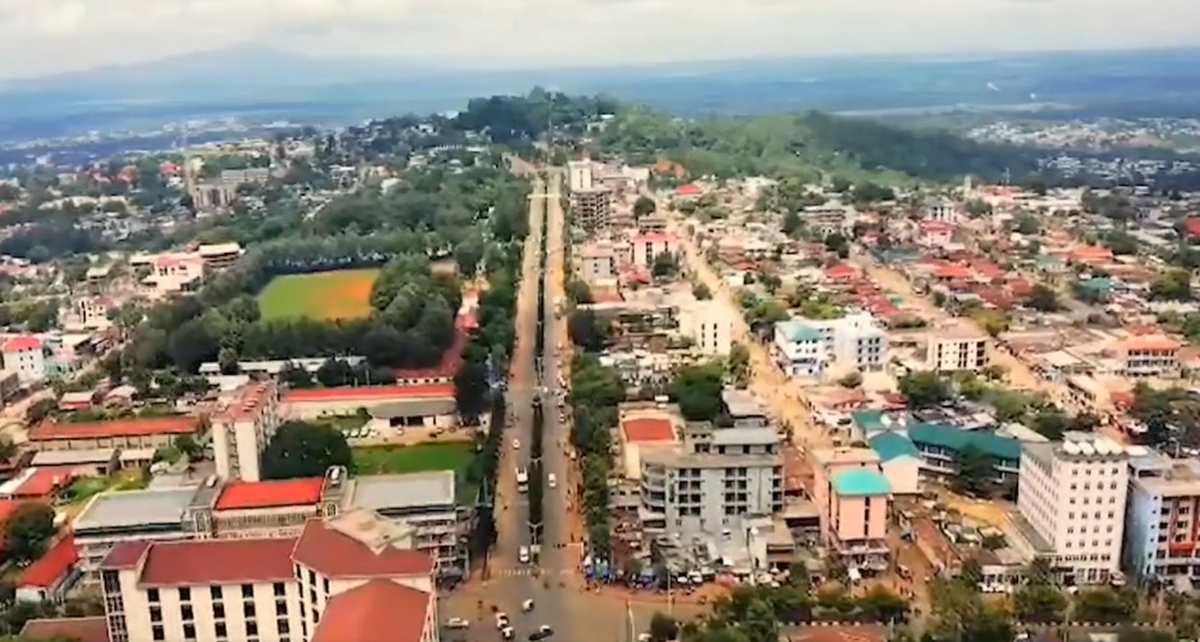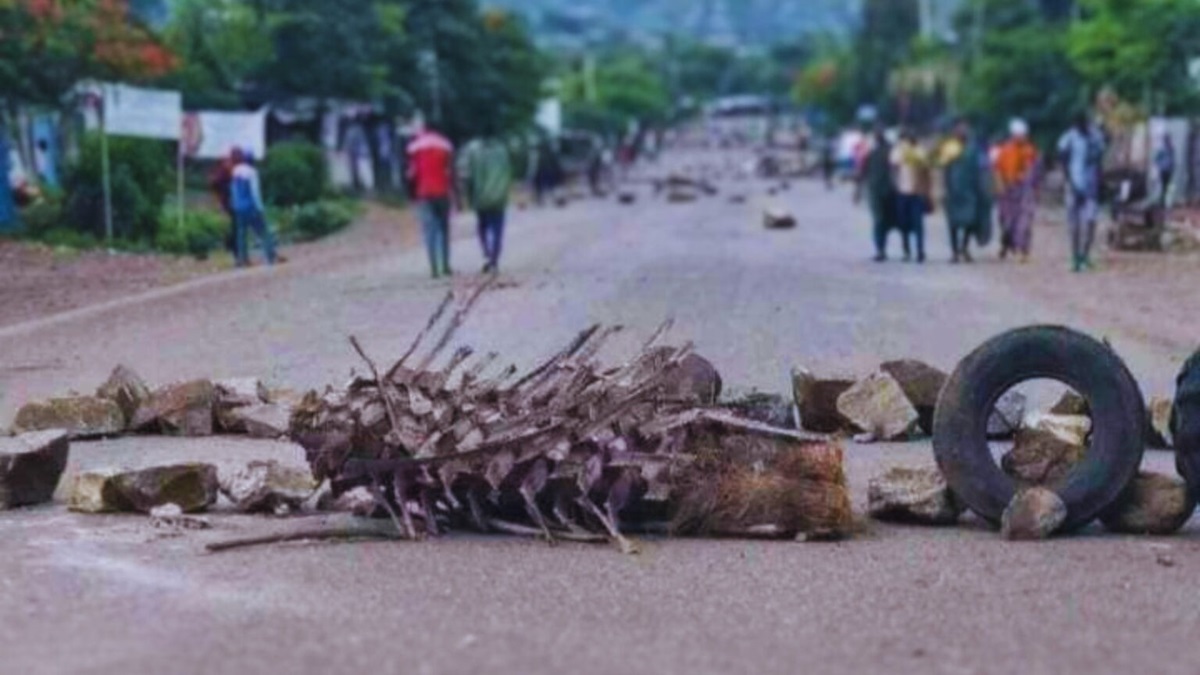In-depth: For the control of Kola Shara: Armed insurgency simmer in Ethiopia’s youngest regional state

By Zelalem Takele @ZelalemTakelee
Addis Abeba – In a stunning turn of events, armed informal groups catapulted into the spotlight in August 2023 as they brazenly assumed control and imposed their own governance over a small kebele adjacent to one of Ethiopia’s major cities, maintaining their hold for an astonishing six-month span.
Contrary to conventional wisdom, this gripping tale didn’t unfold in the expected hotbeds of regions like Amhara or Oromia, renowned for their turbulent clashes and armed factions challenging both regional and federal authorities. Instead, the drama unfolded in the idyllic landscape of Southern Ethiopia, the nation’s 13th regional state, freshly formed just last year.
The battleground? Kola Shara, once a serene Kebele, near Arba Minch City in the Gamo Zone. Here, in a departure from the norm, tranquility was shattered as an unexpected act of defiance against established authority unfolded, leaving the region in a state of disbelief and unrest.
The takeover of Kola Shara, a small kebele renowned for its banana production and inhabited by nearly 20,000 individuals, was marked by violence. On 25 August 2024, a tumultuous clash erupted in the area, resulting in the tragic loss of 17 lives and inflicting numerous injuries.
The formation of the Southern Ethiopia region marked the establishment of the latest regional state within Ethiopia, delineated from six zones previously comprising the SNNP: Wolaita, Konso, South Omo, Gamo, Gedeo, and Gofa, alongside five special woredas (districts), namely Burji, Basketo, Ale, Amaro, and Derashe, following a referendum conducted in February 2023.
Nevertheless, since its inception, the newly formed Southern Ethiopia region has been embroiled in instability.
In August 2023, residents of the Gamo Zone and Arba Minch city initiated protests following the dissemination of an unverified document widely circulated on social media, which suggested Wolaita Sodo of the Wolaita zone as the principal administrative and political hub for the new collective region.
Deciphering the root cause
According to testimonies of residents interviewed by Addis Standard, the conflict unfolded between government security forces and an informal armed faction that had assumed control over Kola Shara’s administrative apparatus.
As articulated by locals, the underlying cause of the confrontations stemmed from opposition towards an initiative by the administration of Arba Minch Zuria district aiming to integrate the surrounding areas including Kola Shara into the jurisdiction of Arba Minch city.
This land constitutes the backbone of our livelihoods; we adamantly oppose surrendering it.”
A resident of Kola Shara Kebele
Situated within the bounds of the Arba Minch Zuria district, Arba Minch city stands as the principal urban center within the Gamo Zone.
However, advocacy groups closely monitoring the situation assert that the roots of the conflict extend much further back.
As outlined in a recent report by the Ethiopian Human Rights Commission (EHRC), the genesis of the discord can be traced back to 2002 when the structural framework of the Arba Minch Zuria district administration underwent revision under the auspices of the former Southern Nations, Nationalities, and Peoples Region Urban Development and Construction Bureau.
Per the revised structural plan, several peripheral areas, including Kola Shara Kebele, were earmarked for inclusion within the administrative ambit of Arba Minch City.
While three kebeles were successfully absorbed into the city’s administration, certain denizens of Kola Shara kebele contested this decision vehemently, resulting in protracted disputes.
The EHRC report underscores a central issue driving conflict: the profound apprehension gripping residents and farmers of Kola Shara over potential land loss amid integration efforts.
Despite reassurances from authorities promising the protection of residents’ homes and agricultural lands, coupled with pledges of providing proper ownership certificates, tensions continue to simmer as residents’ anxieties linger unresolved.
Sadika Sime, a revered elder in the Gamo Zone, disclosed to Addis Standard that since then, there have been endeavors by the local authorities to assimilate the area, including conducting several discussions, albeit without success.
According to him, the residents have raised various inquiries, including the necessity for the administration to prioritize the development of Arba Minch City before integrating surrounding areas.
“The apprehension regarding land loss has significantly impeded the integration process,” he elucidates.
Sadika contends that diverse stakeholders with vested interests in the area have propagated misinformation among the populace, alleging that their land will be expropriated by the Arba Minch City administration upon city integration.
The elder further asserts that these individuals are landholders possessing extensive parcels of unused land, which would potentially face loss if left uncultivated. According to Sadika, these stakeholders have orchestrated the discord.
“Combined with a lack of awareness and inconsistent communication from the local government, these factors have collectively hindered the incorporation of the area into Arba Minch City,” he asserted.
However, this is not the only narrative existed about the root cause.
A resident of Kola Shara, preferring anonymity, asserts that the Arba Minch City Administration aims to appropriate the area for constructing housing units designated for government officials. He also maintain that they were notified of potential eviction from their lands, where they have been cultivating bananas.
“This land constitutes the backbone of our livelihoods, where we have cultivated fruits and raised our families; we adamantly oppose surrendering it for government housing projects,” the resident stated.
Moreover, residents contend that the government’s assertion of engaging in discussions has been unilateral and superficial, with local authorities presenting their proposals without earnestly considering the community’s viewpoints.

Inhabited by nearly 20,000 individuals, Kola Shara kebele is renowned for its banana production (Photo: tandfonline.com)
In light of their recent resistance, locals claim to have faced arrests, abuse, and mistreatment. The resident recalls a similar incident in 2014 when the Arba Minch City Administration attempted forcible integration, resulting in arrests and fatalities.
Tewodros Wassihun, a public prosecutor in Arba Minch City, offers a slightly different explanation.
He contends that the residents voiced dissatisfaction over the insufficient prior discourse preceding the decision. “Furthermore, residents harbored fears stemming from a misunderstanding of the plan.”
Tewodros elucidates that residents misconstrued the integration of the area into the city as subjecting the kebele to the urban land lease system, thereby raising concerns about potential loss of their farmland, given that a significant portion of the populace relies on banana cultivation.
However, the public prosecutor clarifies that this apprehension is unfounded. “The proclamation issued during the formulation of integration plans stipulated that peasants with extensive landholdings would retain their holdings or engage in urban agriculture.”
The aftermath
Despite encountering opposition from local residents, local authorities proceeded with its decision to reintegrate Kola Shara into the city in 2023. In acted subsequent to the establishment of the South Ethiopia region, this decision incited a six-month period marked by heightened tension between the two administrative entities.
According to EHRC report, inhabitants of Kola Shara kebele have established a militia comprising local youths and some elders, aimed at upholding order and assuming administrative duties.
Following informal groups control of the security and administrative framework of Kola Shara Kebele, designated administrative and security officials from the Arba Minch city administration were impeded from entering into the kebele.
Consequently, the kebele remained beyond the government’s jurisdiction and the purview of various service providers encompassing security, healthcare, education, and agriculture, thereby resulting in service disruptions.
In this period, despite Arba Minch City consistently fulfilling the full salaries of Kola Shara Kebele government employees, including school teachers, the kebele administration mandated that schools disregard any directives from the city’s education office.
Consequently, educational services within the kebele have remained suspended since May 2023. This situation has resulted in numerous students being unable to sit for national examinations, leading to significant disruptions in their educational pursuits.
In an effort to reinstate order, on 24 August, 2023, law enforcement and security personnel from the South Ethiopia region entered Kola Shara Kebele amid heightened tensions.
Sadika Sime, the elder from the Gamo Zone told Addis Standard that for the duration of five to six months, the youth in the vicinity have opted to abstain from returning to their residences to safeguard the area against any incursion by the local authorities.
“Notably, among these informal factions are former government law enforcement officers who are armed,” he stated.
Sadika further revealed that a violent exchange of gunfire ensued on a specific day, resulting in the tragic loss of several lives, including innocent civilians.
As reported by anonymous resident, the eruption of violence commenced when residents ignited mattresses belonging to security forces stationed in a nearby camp. Allegedly, in retaliation to this incident, security forces initiated indiscriminate shooting targeting civilians.
The resident further disclosed that a series of gunfire exchanges transpired between local militia members and security personnel from the zonal administration, resulting in the lamentable loss of at least 17 individuals, among them four police officers.
As per the report issued by the EHRC, subsequent to the assumption of control by government security forces over the kebele, two members of the task force, dressed in attire resembling that of the Southern Ethiopian Regional Police, encountered three individuals (comprising two militia members and one resident) concealing themselves within a room situated in the kebele administrative office.
Eyewitnesses who were present at the time recounted that the security forces forcibly breached the door of the room, compelled the individuals to emerge, and subsequently inflicted gunshot injuries upon them in various regions of their bodies.
Following the altercation, the local administration has formally declared that the area has reverted to a state of normalcy. The announcement from the administration asserts that they have effectively apprehended individuals who were actively involved in endeavors to disrupt the peace of the newly established region and subvert the constitutional framework.
The underlying causes of the conflict have been deliberated upon with the residents and subsequently resolved.”
Tewodros Wassihun, a public prosecutor in Arba Minch City
Tewodros additionally confirms this information, affirming that following the incident, the area has indeed reverted to a state of normalcy. “The underlying causes of the conflict have been deliberated upon with the residents and subsequently resolved,” he affirmed.
However, residents harbor divergent viewpoints on the matter. An anonymous resident informed Addis Standard that subsequent to the incident, government security forces have been focusing their attention on the youth within the area.
The resident voiced concerns, remarking, “Men are scarce in the area; they’re either detained or taking refuge in the wilderness, apprehensive of the security forces.”
Residents interviewed by the EHRC indicated a gradual escalation of tension arising from the persistent disagreement concerning the administrative configuration. They assert that individuals who challenge the current governance model persistently face systematic human rights abuses and discrimination as a consequence of their stance.
Sadika disclosed to Addis Standard that he and other elders endeavored to address the issue through traditional conflict resolution mechanisms. According to him, they managed to persuade the youths hiding in the forest to come forward, assuring them of safety from arrest.
Nevertheless, Sadika conveyed that upon the youths’ emergence, government forces detained them. “Consequently, I decided to disengage from the process.” AS







